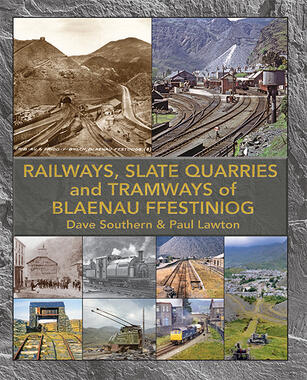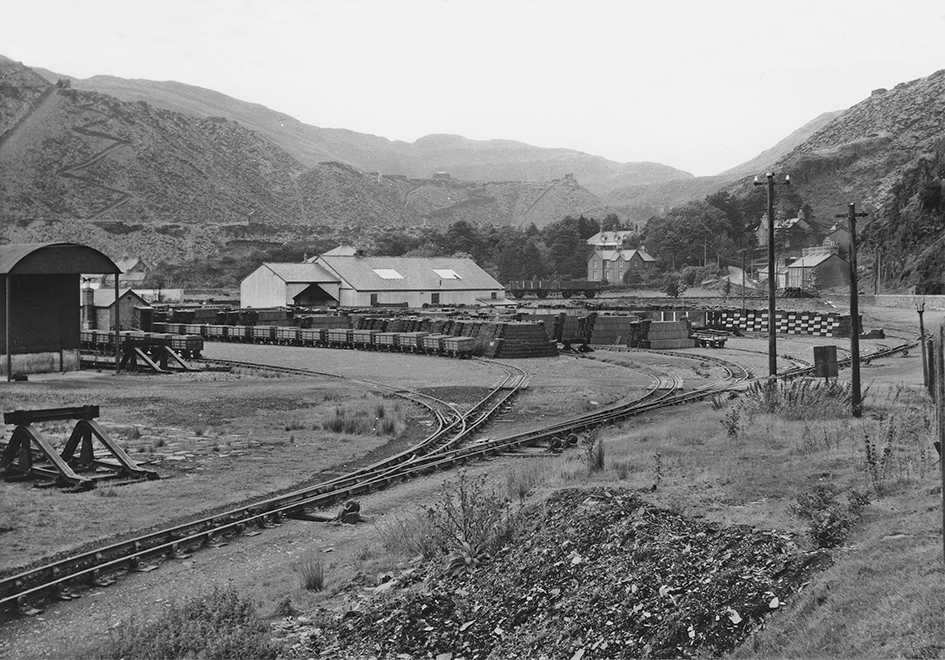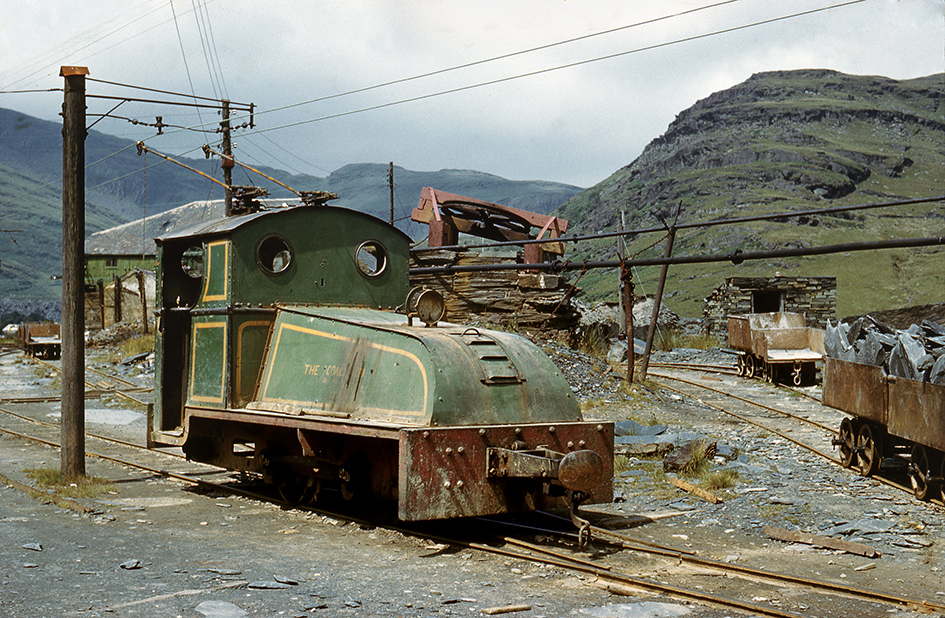The Railways, Slate Quarries and Tramways of Blaenau Ffestiniog

The Railways, Slate Quarries and Tramways of Blaenau Ffestiniog
Dave Southern and Paul Lawton
192 pages. 275x215mm. Printed full colour throughout on gloss art paper, laminated printed board covers.
ISBN13 9781915069313
£35.00
Dave Southern and Paul Lawton
192 pages. 275x215mm. Printed full colour throughout on gloss art paper, laminated printed board covers.
ISBN13 9781915069313
£35.00
Written by two authors with extensive knowledge of slate quarries and the Blaenau Ffestiniog area, this book surveys the network of railways and tramways that were built to extract the slate and then to transport it onwards to its markets, where it 'roofed the world' Slate created Blaenau Ffestiniog, turning it into one of the most important towns in North Wales and though the industry has largely gone, its legacy lives on, not only in the slate tips that dominate the skyline but also in the surviving railways that add to the town's prosperity today. The book goes beyond the geographical confines of Blaenau Ffestiniog, allowing the authors to devote separate sections to each of the major quarries that had a significant tramway system. The tramways, and what remained of them in later years, together with the three major railways that slate attracted to the town are fully illustrated, with pictures that for the most part are previously unpublished.


The Railways, Slate Quarries and Tramways of Blaenau Ffestiniog - Sample Images

This general view of the L&NWR goods yard in 1958 shows the exchange sidings still busy with slate traffic, with rakes of loaded 4-wheeled wagons which had come from the quarries connected to the Rhiwbach Tramway. At the rear of the slate stacks, two standard gauge opens can be seen, standing on a raised line that was used to transship coal and other goods directly into narrow gauge wagons. Roger Carpenter collection

In 1920, Llechwedd Quarry made the decision to switch to electric power for haulage, initially using battery electric vehicles (BEV). This was soon followed by the establishment of an overhead ‘trolley’ system using locomotives converted from steam operation The 15hp 0-4-0 The Coalition had started life as Edith, built by Bagnall as an inverted saddle tank in 1890 (Works No. 1278) but was then rebuilt in 1930 in the quarry workshops using the original frames and cab. It is seen here in the yard on 8th July 1960, alongside two wagons filled with slate rubbish that were awaiting tipping. Notice also the light, and very typical, tramway track. The Coalition has survived closure of the quarry and a period being stored outside whilst finance was sought for its restoration, along with sister engine The Eclipse. To date this has not happened but both engines have moved to Statford Barn where they can be seen on open days. A.N.H. Glover/Kidderminster Railway Museum
